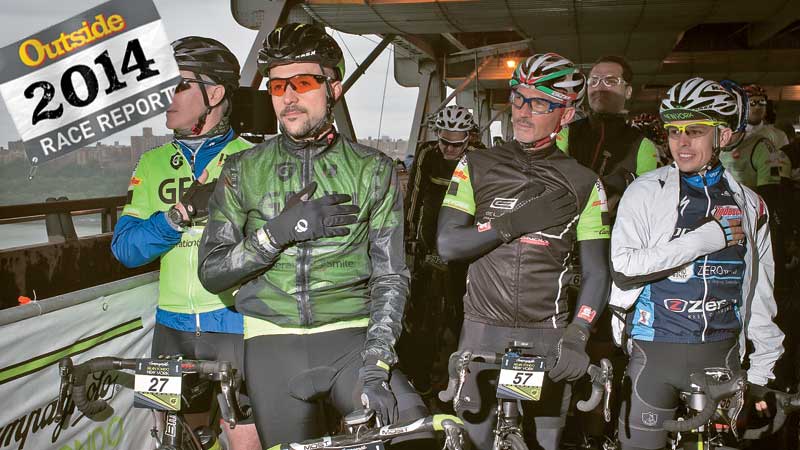I was halfway up Italy’s Passo dello Stelvio, a 48-switchback beast in the Alps that’s widely regarded as one of cycling’s most mythic and punishing climbs, when the altitude kicked in. We were approaching 9,000 feet, after all. But rather than hurl my oatmeal breakfast, I settled into a manageable rhythm as the lead group of sinewy-legged climbers pedaled away from me.
Seasoned bike racers refer to this moment as getting dropped. But I hadn’t clipped in to win. The annual Dreilander Giro is a 104-mile, fully supported ride known as a gran fondo, and its main purpose is to challenge riders with dramatic terrain—vertiginous climbs, historic cobblestones—while also providing cushy comforts like aid stations, bathrooms, and a SAG wagon. Fondos are not like century rides: these are serious riders with high-end rigs. Still, they feel rewarding no matter where you place in the pack.
After losing contact with the leaders, I drifted back to another group and soaked up the views. Four hours and 70 miles later at the finish, I toasted my efforts alongside thousands of other newfound cycling brothers-in-arms with a few too many steins of Stiegl.
Since the mid-1990s, fondos have been all the rage in Europe. Towns shut down, feed stations crop up along the course, and TV networks occasionally descend, as upwards of 10,000 amateur cyclists and a few notable pros compete over terrain made famous in races like the and the . A select few riders target top-ten placings, but the vast majority go for the experience. Among cyclists, it’s the equivalent of playing softball at Wrigley Field, and more of them are being staged in the States.
“A gran fondo is like a marathon on bikes,” says Ulrich Fluhme, a former corporate lawyer who ditched his career to start the Gran Fondo New York with his wife in 2011. “At the front people compete for the win, in the middle they want the P.R., and at the end they’re simply having fun and trying to finish before the cutoff time.” Today, the GFNY is one of America’s largest, attracting an international peloton of 5,000 cyclists who ride a 100-mile out-and-back course in the Hudson Valley.
“There are no choices in a typical bike race. You have to go as hard as you can,” explains Greg Fisher, marketing director at , which organizes the annual with former pro Levi Leipheimer in Santa Rosa, California. “A gran fondo lets riders modulate their experience based on their goals. You can still treat it as a race, but how hard you go is up to you.”
That freedom to get what you want out of it—along with the gorgeous roads and ubiquitous wineries of Sonoma County—has made Levi’s Gran Fondo the most popular in the U.S., attracting 7,500 competitors.
There’s also a growing list of smaller, more curated fondos, like celebrity chef Michael Chiarello’s Bottega Gran Fondo. Limited to 300 riders, the inaugural Napa Valley event in April will put competitors on teams captained by retired pros like George Hincapie and David Zabriskie, while chef-sponsored rest stops will guarantee that the calories are as epic as the riding. Chiarello, an obsessive cyclist who has competed in some of Europe’s biggest gran fondos, sees it as the next step in the scene’s evolution. “We wanted something intimate, experiential, and not so large that it was stressful,” says Chiarello. “Like the best gran fondos, we wanted to make it fun, and we have.”


